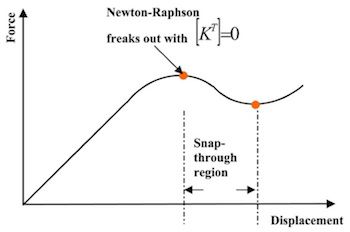So I was reading a journal article yesterday when I came across a figure that opened my mind to a new aspect of the Newton-Raphson method. Bear in mind that this figure appeared in a scholarly, peer-reviewed journal. Here you go:

The Newton-Raphson method freaks out… I literally laughed out loud when I saw that. I’m sure that particular annotation was thrown on there as filler text and meant to be replaced. The only problem is how easy it is to miss something like that when you’re rushing to meet a deadline, especially on a graph which you will typically edit independently of the manuscript.
Cory Doctorow has a great technique for catching this sort of thing:
Researching isn’t writing and vice-versa. When you come to a factual matter that you could google in a matter of seconds, don’t. Don’t give in and look up the length of the Brooklyn Bridge, the population of Rhode Island, or the distance to the Sun. That way lies distraction — an endless click-trance that will turn your 20 minutes of composing into a half-day’s idyll through the web. Instead, do what journalists do: type “TK” where your fact should go, as in “The Brooklyn bridge, all TK feet of it, sailed into the air like a kite.” “TK” appears in very few English words (the one I get tripped up on is “Atkins”) so a quick search through your document for “TK” will tell you whether you have any fact-checking to do afterwards. And your editor and copyeditor will recognize it if you miss it and bring it to your attention.
I’ve also started using hashtags when writing my dissertation since # doesn’t show up too often otherwise. This is probably a really bad habit I picked up from programming where I would tag my code with #jbd (my initials) so I can find my contributions in a 25 year-old, 2000 line Fortran file when debugging it a year later.
Bottom line: Re-read anything you write before you submit it to anyone.